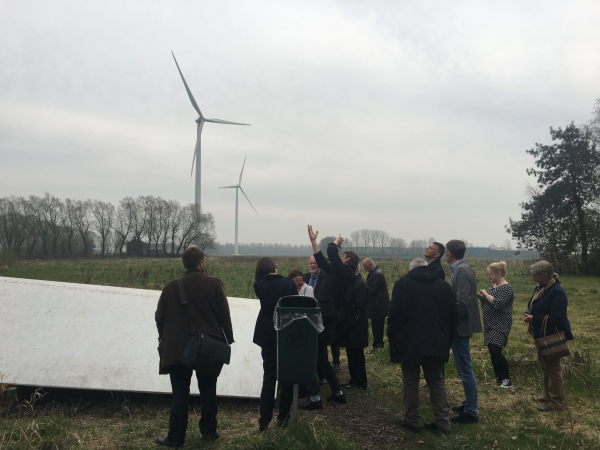Visiting the European Green Capital

On the 13th April selected members from the CoR's ENVE commission attended an interesting and varied study visit to Nijmegen in the Netherlands. Members were to be provided with the opportunity to see and compare with our own experiences environmentally friendly solutions used in wind, industrial and river parks. Nijmegen is the European Green Capital for 2018 and we soon began to see why.
Our day started with a walk through the city centre to the Town hall. The lack of vehicles was immediately noticeable as the central area is only for bikes and public transport. This made it much quieter and free flowing with no air pollution or congestion. I had never observed a bicycle rush hour before but it was very efficient!
We passed by what appeared to be several historic and striking buildings including the Town Hall and were surprised to discover that they had all been painstakingly rebuilt after the entire historic centre was destroyed following mistaken bombardment by allied forces in World War 2. Reconstruction has continued until as recently as the early 1980's.
We were welcomed by the mayor of Nijmegen Hubert Bruis and the Regional Minister of the Province of Gelderland Michiel Scheffer.
We then travelled by bus (all 250 local buses use biogas) to the windpark at Nijmegan –Betuwe where we had the unique experience of climbing up into a working wind turbine which was fascinating. This windpark is a co-operative with a total investment of 14.9million euro. 2 million euro was raised by 1,013 citizen shareholders who receive a return on their investments. The local energy company can receive wind power, there is a fund for renewable energy projects plus a fund for communities around the wind farm. This in turn contributes to a sustainable region which can be more locally independent in its energy supply and stimulates the regional economy. Since 2016 four turbines have been in operation providing enough power for 7,100 households and a fifth is in the pipeline raising this to 8,900. We were reminded that without the active involvement of citizens and local return of benefits the energy transition is impossible!
The next stop was across the river Waal to Arnhem where we visited the IKPW industrial park. This old site which had become very dilapidated has been transformed by its owners using the clever and imaginative conversion of the old buildings. It now hosts many modern companies with an emphasis on green technology such as multi charging solutions for electric vehicles and a clean mobility centre.
The sun came out which was a bonus and we moved on to a tour of the impressive flood alleviation scheme on the River Waal and the creation of the Nijmegan river park. The sharp bend in the river previously made it difficult for water to drain from the area. In 1993 & 1995 250,000 people had to be evacuated from their homes. The bottleneck needed a radical solution so the dyke at the north bank was moved 350 meters. inland. Work began in 2011 and was completed in 2016 and focussed on dredging an extra ancillary channel that could lower water levels by 35cms at peak river levels. Additionally, river levels can be raised in times of drought to ensure free movement of commercial traffic along this key waterway. This created a new island that serves as a public park for citizens where they can bathe safely and enjoy the beaches. New residential developments are also planned.
Our day finished at the newly opened city museum at Bastel where panoramic views of the city, river and its new park were enjoyed. Thanks were given to our hosts for a memorable and enlightening day.

